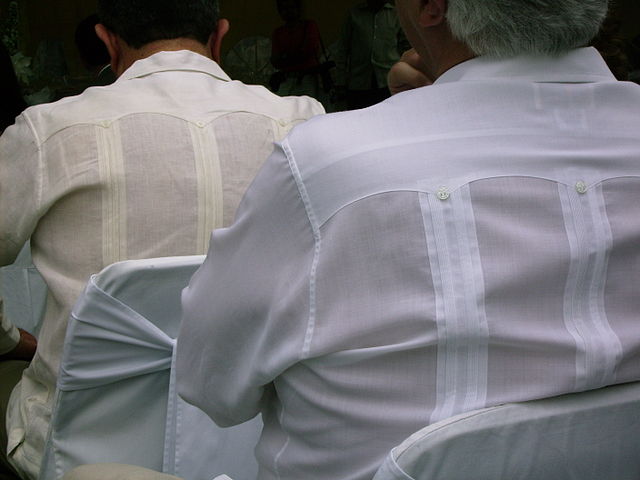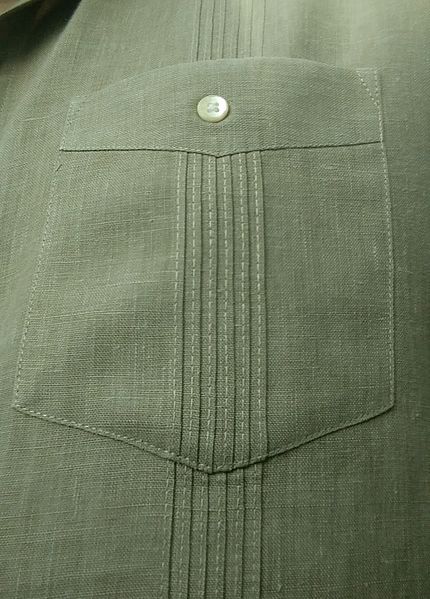The guayabera, also known as camisa de Yucatán, is a men's summer shirt, worn outside the trousers, distinguished by two columns of closely sewn pleats running the length of the front and back of the shirt. Typically made of linen, silk, or cotton, and appropriate for hot and/or humid weather, guayaberas are popular in Mexico, Central America, the Caribbean, South America, Southeast Asia, the south of Spain, and Portugal.
Two guayaberas seen from the back, showing the alforza pleats and the Western-style yoke
Closeup of a pocket on a guayabera, showing the button and aligned alforzas
Cuban man wearing a guayabera c. 1956
Men wearing white filipina shirts in the traditional jarana Yucateca dance of Yucatán, Mexico
The barong tagalog, more commonly known simply as barong, is an embroidered long-sleeved formal shirt for men and a national dress of the Philippines. Barong tagalog combines elements from both the precolonial native Filipino and colonial Spanish clothing styles. It is traditionally made with sheer textiles (nipis) woven from piña or abacá; although in modern times, cheaper materials like organza silk, ramie or polyester are also used.
Late 19th century barong tagalog made from piña with both pechera ("shirt front") and sabog ("scattered") embroidery, from the Honolulu Museum of Art
Barong tagalog worn with a salakot. The woman is wearing a terno.
Dancers in barong tagalog (with a buntal hat) and traje de mestiza performing Jota Cagayana
Full traditional Tagalog attire for working-class commoners during the Spanish colonial era, with barong tagalog, esclavina (rain capes), and salakot headwear (c.1855)








